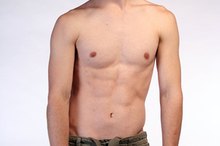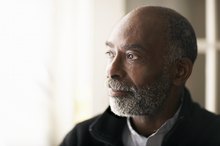What does fact checked mean?
At Healthfully, we strive to deliver objective content that is accurate and up-to-date. Our team periodically reviews articles in order to ensure content quality. The sources cited below consist of evidence from peer-reviewed journals, prominent medical organizations, academic associations, and government data.
The information contained on this site is for informational purposes only, and should not be used as a substitute for the advice of a professional health care provider. Please check with the appropriate physician regarding health questions and concerns. Although we strive to deliver accurate and up-to-date information, no guarantee to that effect is made.
Normal Pulse Rate for Senior Citizens
Your pulse rate is the number of times your heart beats per minute 12. A "normal" pulse rate depends on your age and current level of fitness 2. The average resting heart rate for most adults, including senior citizens, is between 60 and 100 beats per minute 1. Young children tend to have higher resting rates than adults, while well-trained athletes have very low pulse rates 2.
Know Your Pulse Rate
As you age, you may find your resting heart rate will decrease 1. To find your resting rate, be still for approximately 10 minutes before starting. Most people find it easiest to take their pulse at the wrist 2. Place your index and middle fingers over the underside of the opposite wrist, below the base of the thumb, and firmly press until you feel the pulse 2. You can also measure your pulse on your neck by putting your index and middle fingers to the side of your Adam's apple in the hollow, soft area 2. Once you find your pulse, count the beats for one minute 2.
Target Heart Rate
How Much Should a Man Weigh?
Learn More
Regardless of your age, it is important to know your target heart rate 1. This helps you not only measure your initial fitness level, but then allow you to monitor your progress in an exercise program. When exercising, a 60-year-old should aim for a heart rate of 80 to 136 beats per minute (bpm) 1. At 65, the ideal heart rate should be between 78 and 132 bpm, and at 70 years of age, from 75 to 128 bpm 1. To find your maximum heart rate, subtract your age from 220 1.
Significance
Knowing and monitoring your pulse can provide important information about your health 2. Any change from your normal heart rate may signify a medical condition 1. Your doctor should know if your heart rate is consistently fast (tachycardia) or slow (bradycardia) 1. Also, inform your doctor if your pulse is very firm, irregular or hard to find, as these could all signify potentially dangerous medical conditions 2.
Safe Exercising
Calorie Reduction for the Morbidly Obese
Learn More
As you age, you may look to avoid any high-impact exercises that put a lot of strain on the muscles and joints. Swimming, walking and dancing will help you reach your target heart rate without causing excessive strain on the body 1. Do these exercises for 20 to 40 minutes three times a week.
Warnings
Always use common sense when exercising. Drink plenty of water, and stop if you feel dizzy or nauseous. If you're over 50, consult your doctor before beginning any new exercise program.
- Always use common sense when exercising.
- If you're over 50, consult your doctor before beginning any new exercise program.
Related Articles
References
- Target Heart Rate
- Pulse
- Cleveland Clinic. Pulse and heart rate. Updated November 18, 2018.
- Reimers AK, Knapp G, Reimers CD. Effects of exercise on the resting heart rate: A systematic review and meta-analysis of interventional studies. J Clin Med. 2018;7(12):503. doi:10.3390/jcm7120503
- Quer G, Gouda P, Galarnyk M, Topol EJ, Steinhubl SR. Inter- and intraindividual variability in daily resting heart rate and its associations with age, sex, sleep, BMI, and time of year: Retrospective, longitudinal cohort study of 92,457 adults. PLoS One. 2020;15(2):e0227709. doi:10.1371/journal.pone.0227709
Writer Bio
Lisa Weber is a freelance writer/editor and former special education teacher. She has a bachelor's degree in journalism and professional writing, and a master's degree in special education. Over the last 15 years, she has written for a variety of newspapers, magazines, and on-line publications.







